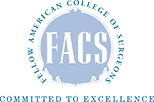Gynecomastia Surgery Postoperative Instructions
If you have had other procedures performed at the same time, please read those instructions as well for more specific details.
Things to have at home prior to your Surgery:
- An over the counter Stool softener
- Non-carbonated beverages
Give us a call at (203) 924-2900
Positioning
Sleep any way that is comfortable but avoid direct pressure on the chest for a minimum of 4 weeks.
Garments
Continue to wear the pressure vest for 4 weeks.
Gauze pads may have been placed inside the vest. These do not need to be replaced and can be removed before your first showering and only need to be replaced if there is some small continued drainage.
Showering
You may begin showering 48 hours after surgery. Remove the vest and any gauze pads. Gently shower. The white tapes glued to the skin incisions may get wet (they will fall off on their own in a few weeks and do not need to be replaced). Pat dry and wear vest.
Activity
Please minimize your activity following surgery and slowly increase it slowly over the following few weeks. The procedure does not require bed rest. You should be up and walking at least a few times per day (minimum) including the day of surgery. Avoid chest exercises until discussed with Dr. Reilly at your office visit.
Diet
It is very Important to stay fully hydrated during the post-operative period (it is best to drink water or dilute non-carbonated beverages the remainder of the day following surgery). Ensure that you are urinating at least a few times per day. You can resume solid food when you feel ready.
Medications
Read and follow all package inserts, warnings and instructions for any medications or products you use. Narcotic medications such as PerCocet, Vicodin or Tylenol with codeine can cause constipation and you should consider taking an over counter stool softener at the same time. You may take over the counter pain believers instead of the narcotics. Do not take aspirin containing products. Do not take additional Tylenol if taking narcotic pain pills.
Drains
(Skip this section if you do not have drains)
Drains are plastic tubes that are placed under the skin at the time of surgery to help remove fluid from the surgical area. The hospital nursing staff will explain how they work and how to take care of them prior to your leaving the hospital. Briefly, a tab at the top of the drain collection chamber is opened.
Once the top has been opened read the level of the fluid through the numbered marks on the side of the chamber to assess how much volume is in the chamber. Record this number once or twice per day. Squeeze out the contents into the toilet or sink and record the amount once or twice per day.
IMPORTANT: Keep the chamber squeezed while putting the top back on the chamber! This will cause a dimple in the sides of the chamber and this is how is should appear. The drains are removed in the office usually within 2 to 3 weeks depending on the amount of drainage. Removal of the drains is not considered painful. The drains may have clear, bloody or no drainage and may drain uneven amounts. All of these conditions are considered acceptable.
Occasionally, the drains will stop functioning and fluid may drain around the tube where it exits the skin. If this happens simply apply gauze pads as needed to that site. After showering apply Bacitracin or Neosporin to the skin where the tube exits and place two Band Aids facing each other around the tube exit site to prevent the ointment from being removed.
Follow-up appointment
If you do not have a follow-up appointment please call the office to be seen in 2 weeks.
Changes in condition
Please call 911 if you have any shortness of breath or difficulty breathing or for any reason that causes you great concern regarding your medical condition. Please call the office or Dr. Reilly’s cell phone (203 209 6834) if you have any of the following: nausea or vomiting, inability to pass your usual amount of urine, temperature (verified by thermometer) greater than 101.0 F, shaking chills or any concerns regarding minor changes in your health status.







